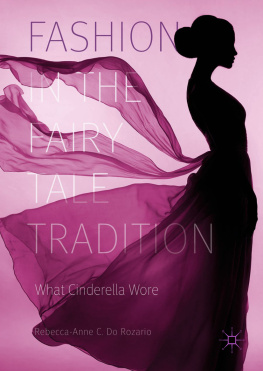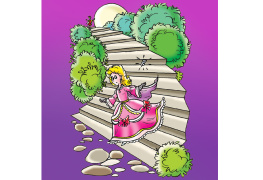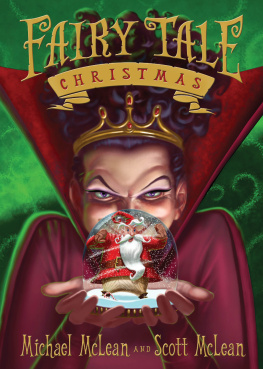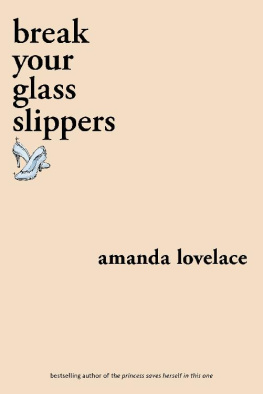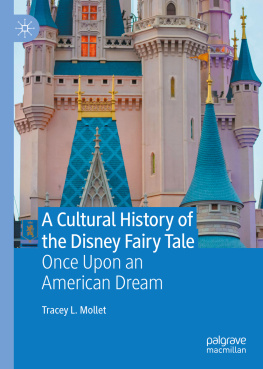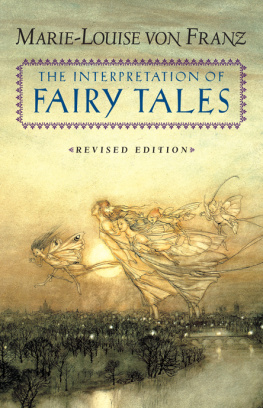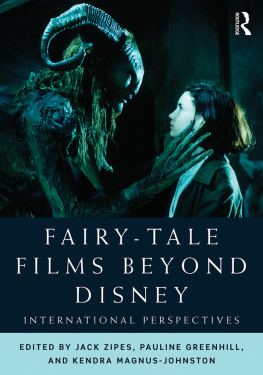1. Introduction: The Rise of Fashionable Fairy Tales, a Noble Fabrication
A glass slipper clatters down the palace steps, a scrap of red cloth falls from the jaws of a wolf, the stiff new leather of a small pair of boots repulses brambles as a cat stalks his prey, a donkeys pelt lies discarded upon the floor of a scullery maids room, and the severed feet of a child, shod in red shoes , dance through a deep forest. These are just some of the objects of clothing and footwear woven through the most famous fairy tales. The items of the fairy tale wardrobe exist within changing economies of consumption and luxury, evolving textile and clothing industries, and discourses of fashion that shape the fate of fairy tales divers protagonists. Were dealing with what is worn, what meanings can be understood from sartorial gestures, and the skill, economics, and even political powers that drive sartorial choices.
Fairy tale is fashion. For a long time, fairy tale has been treated as an ancient legacy, a universal compendium of symbols, a guide to the inner psyche. More recently, there has been increased focus on fairy-tale history, on the waves of retellings and adaptations. Still, very frequently, objects of fashion are treated chiefly as symbol or metaphor, rather than as the representation of dress on trend or otherwise at the time. The words themselves, rather than the fashions represented, become critical. Scholars such as Marina Warner and Elizabeth Wanning Harries have scoured print histories and redeemed authors from the timeless haze of the fairy-tale miasma, and others such as Holly Tucker and Jo Eldridge Carney have embedded key topics of fairy talefertility and queenship, respectivelyin their historical contexts. Still, a great part of the history of fairy tale is actively stimulated by sartorial practices. Colleen Hill s Fairy Tale Fashion (2016), based upon the 2016 Fashion Institute of Technologys exhibition of the same name, traces fairy tales influence upon high fashion, smartly relating the fashions evoked in fairy tales themselves. Other scholars have written about the items of fashion that have found fame as iconic sartorial gestures; Kathryn A. Hoffmann , for instance, writing on the glass that went into the slipper , and Hilary Davidson exploring the redoubtable red shoe. The key is bringing these threads togetherexploring how the fashion system and material cultures have influenced the way fairy tales have evolvedto find out why those glass slippers, red capes, and feline boots exist not simply as iconic symbols, but also as active components of fairy tale.
Fashion itself is a slippery term, referring to trends in clothing and also fields such as music, literature, and interior design. Fashion has a broad reach, but at its core is sartorial display and temporality. As Giorgio Riello and Peter McNeil describe fashion, it is the result of a historical process: fashion as a flux in time . In this respect, it would seem that fairy tales operate counter to fashion. Yet, that perception is as skewed as an argument that the little black dress is timeless, when clearly, the precise concept is a twentieth-century invention. The evocation of timelessness, nostalgia, and antiquity reveals how fairy tales themselves exist in the same kind of temporal flux as fashion. The symbols, the metaphors that scholars have long interpreted, take on fresh meaning when understood within the temporal flux, and even the key fairy-tale identities become more obviously creatures of their time, rather than simply timeless.
John Styles observes that the most influential delineation of fashion in recent scholarship is as identity embodied in clothing.
Enchanted (2007), for instance, initially operates as nostalgia for classic Disney animation. Giselle, the hero played by Amy Adams, begins the film as an animated character. She wears a diaphanous pink dress with Regency notes, then changing into a full, poufy wedding gown any nineteenth-century brideor 1980s bride, for that mattermight desire. The physical materiality of Disney princess dress is thus elaborated and Amy Adams, as Giselle, is compelled to wrangle her gown as she moves through crowded Manhattan streets and subways. The dislocation of gown with time and place ably highlights the perception of the moribund nature of princess dress and, in fact, the fairy-tale princess herself. When Giselle is discovered by Robert Philip and his young daughter, Morgan, the latter nonetheless readily identifies Giselle as a princess by her attire. Enchanted is a film about 2007, renegotiating Disney fairy tale with fashionably feminist nods to marriage and career. Morgan has, for example, wanted a fairy-tale book, but Robert presents her with a book on important historic women, similar to the later Good Night Stories for Rebel Girls (2016), as a better option. Roberts fiance, Nancy Tremaine, is a fashion designer who wears blazers and appears to produce business wear in a workroom of aggressive neutrals. Giselle herself must learn to sew and procure clothing suited to Manhattan in 2007, just as she learns to reassess her convictions regarding true love. The film negotiates the agency of women just as it negotiates between iconic fairy-tale costume and New York fashion.
When the Cinderella narrative ultimately plays out between Robert and Giselle, they attend a masquerade ball called the King and Queens Costume Ball at which the guests are dressed in period costume, evoking the regal, sartorial splendour of the fairy-tale past. Giselle, however, has purchased a fashionable gown to wear. It is Giselles halter-neck, lavender gown that is novel, producing a high-fashion moment at the masquerade ball. For Giselle, a fairy-tale princess, high fashion is masquerade and she loses not a glass slipper , but a clear plastic and suede pump that matches her dress. Giselle consequently picking up a sword and going to the rescue of Robert-in-distress cements the idea that Enchanted is not simply a parody of past Disney fairy tale, but a fashionable innovation of that past. The film navigates between the fairy tale of the past and what is new and on trend. It operates within the flux in time.
Why Cinderella?
In fashion terms, Cinderella is the fairy-tale hero. Her tale is all about the power of clothing to redefine identity. From the moment her stepmother reduces her to rags, her public identity vanishes. She is a domestic slave, forced into unpaid service through the stripping of her material conditions. Even her name is erased by a slur and smut. Clothing that is unfashionable, old, and worn makes it impossible for her to appear and claim her rightful status. The lack of access to suitable clothing ensures her anonymity and regulates her actions. To achieve agency, to re-enter public life and have the opportunity to marry and regain status, she needs the right dress. The ball is simply the required public setting at which to be seen. When the prince meets her at the ball, she is already in full princess dress, and thats the point. To marry a prince, she must look like a princess. In cinematic versions such as The Glass Slipper (1955) and Disneys Cinderella (2015), where Cinderella and her prince meet before the ball, Cinderella cannot claim to be a princess and the narratives require the princes deceit as he claimscorrectly, but deceptivelyto only work at the palace. The prince must go in disguise so as to enter the space in which Cinderella is sequestered from societyand this is often prompted by disenchantment with his own status. In Ever After (1998), Danielle is already assuming higher status prior to the ball by wearing the dress of a noble woman in order to negotiate for the purchase of a servant her stepmother has sold. In the dress of a noble woman, she may spend a day in the company of the prince. It is the ability to obtain the right clothing, by whatever means possiblestealing, magical trees, birds, or fairy godmothers all workthat gives Cinderella the opportunity to re-enter public society, to reclaim status and authority, creating a spectacle of self and, in more urbane versions of the tale, sex. The history of dress, of fashion, plays out as Cinderella is retold across the centuries. The specifics of her shoes, her dress, her coiffure, and her skills with fashion, reveal the changing nature of female agency and hierarchical structures.

